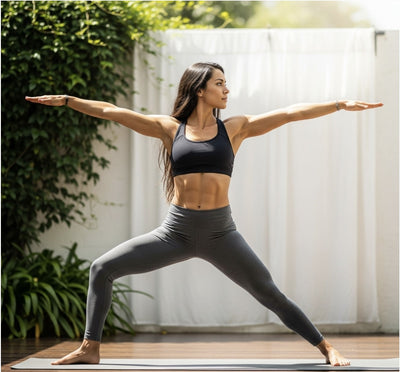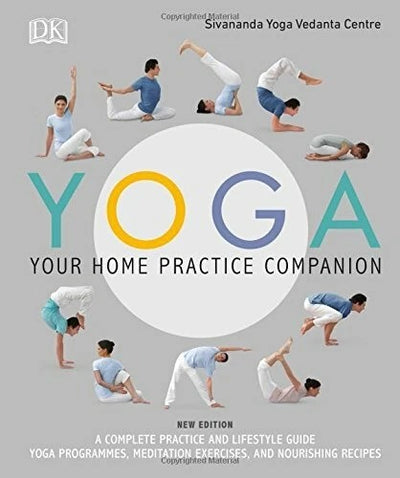
Origins and Evolution of Power Yoga - 5To9Style
Share
Origins and Evolution of Power Yoga
From Ancient Roots to Modern Flow: The Origins and Evolution of Power Yoga
Power Yoga has become a household name in the fitness and wellness world, synonymous with dynamic sequences, intense workouts, and a powerful blend of physical and mental challenge. While it feels distinctly modern, its origins and evolution are deeply rooted in traditional yoga philosophy and practices, specifically the rigorous Ashtanga Vinyasa Yoga system. Understanding this lineage helps appreciate Power Yoga's unique place in the vast landscape of yoga styles.
Power Yoga represents a fascinating adaptation of ancient wisdom for contemporary needs, evolving into an athletic and accessible practice that resonates with millions seeking both physical prowess and mental clarity.
The Ashtanga Foundation: A Disciplined Beginning
To trace the origins of Power Yoga, we must first look to Ashtanga Vinyasa Yoga, as taught by K. Pattabhi Jois (1915-2009) in Mysore, India. Ashtanga is characterized by its strict, fixed sequences of poses, linked by breath-synchronized movements (Vinyasa), Drishti (gaze points), and Bandhas (energy locks). It's a highly disciplined and physically demanding practice.

In the 1980s, Ashtanga gained popularity in the West, attracting students seeking a more vigorous and structured approach to yoga. However, for many Western practitioners, the strict adherence to the fixed series, the often challenging nature of the postures, and the traditional Mysore-style self-practice (where students practice at their own pace with teacher adjustments) proved difficult to integrate into their lifestyles. This paved the way for adaptations.
The American Evolution: Breaking from the Fixed Sequence
The term "Power Yoga" emerged in the late 1980s and early 1990s in the United States, primarily through the efforts of several key teachers who were trained in Ashtanga but sought to make its dynamic principles more accessible and appealing to a broader, fitness-oriented audience.
Key figures in this evolution include:
- Beryl Bender Birch: Often credited with coining the term "Power Yoga" in her 1995 book, "Power Yoga: The Total Strength and Flexibility Workout." She aimed to bring Ashtanga's intensity to a wider audience, focusing on its physical benefits without rigid adherence to the full traditional sequence.
- Bryan Kest: Developed "Power Yoga" classes in Santa Monica, California, emphasizing a challenging, sweat-inducing workout. His style focused on strength, endurance, and the physical benefits, making yoga appealing to athletes and those seeking a more intense physical practice.
- Baron Baptiste: Developed "Baptiste Power Vinyasa Yoga," known for its heated rooms, empowering philosophy, and a more fluid, less rigidly structured Vinyasa flow, while still retaining much of Ashtanga's core intensity.
These pioneers distilled the athletic core of Ashtanga – the dynamic Vinyasa flow, the emphasis on strength, and the breath-movement synchronization – but removed the strict adherence to the fixed series. This allowed for more creative sequencing, variation from class to class, and often, a faster, more challenging pace designed to build heat and burn calories.
Power Yoga Today: A Diverse and Dynamic Landscape
Since its inception, Power Yoga has continued to evolve and diversify. Today, "Power Yoga" is often used as a general term for any vigorous, flowing Vinyasa-based yoga class that focuses on strength, stamina, and a challenging physical workout. While the foundational principles of breath, movement, and heat remain, individual Power Yoga classes can vary significantly in their structure, pace, and specific poses, depending on the teacher and studio.

- Fitness-Oriented: It appeals to those seeking a strong physical practice, often complementing other fitness routines.
- Accessible to Many: While challenging, the freedom in sequencing often allows teachers to offer modifications, making it more adaptable than strict Ashtanga for different body types and experience levels. Using a good yoga mat is essential for dynamic movements.
- Mental Benefits: Beyond the physical, Power Yoga still cultivates mental focus, discipline, and stress relief through its intense engagement of mind and body.
- Modern Appeal: Its adaptable nature and focus on tangible fitness results have cemented its place in mainstream wellness. Choosing comfortable and functional yoga apparel is key for these active sessions.
The Enduring Legacy of Power Yoga
Power Yoga's journey from the disciplined lineage of Ashtanga to a diverse, athletic, and widely popular yoga style showcases the adaptability and enduring appeal of yoga itself. It represents a successful bridge between ancient spiritual practices and contemporary fitness needs, continually evolving to empower practitioners to find strength, focus, and well-being in their busy lives.
Unleash Your Power, Discover Your Flow
Ready to explore the dynamic world of Power Yoga? Embrace a practice that builds strength, boosts endurance, and sharpens your mental focus. For high-performance yoga mats and comfortable, sweat-wicking yoga wear designed for dynamic movement, explore our full collection at https://5to9style.com/collections/all.
Begin your journey with this powerful yoga style today. Visit our homepage for more insights and to discover products that align with your active, mindful lifestyle: https://5to9style.com.








